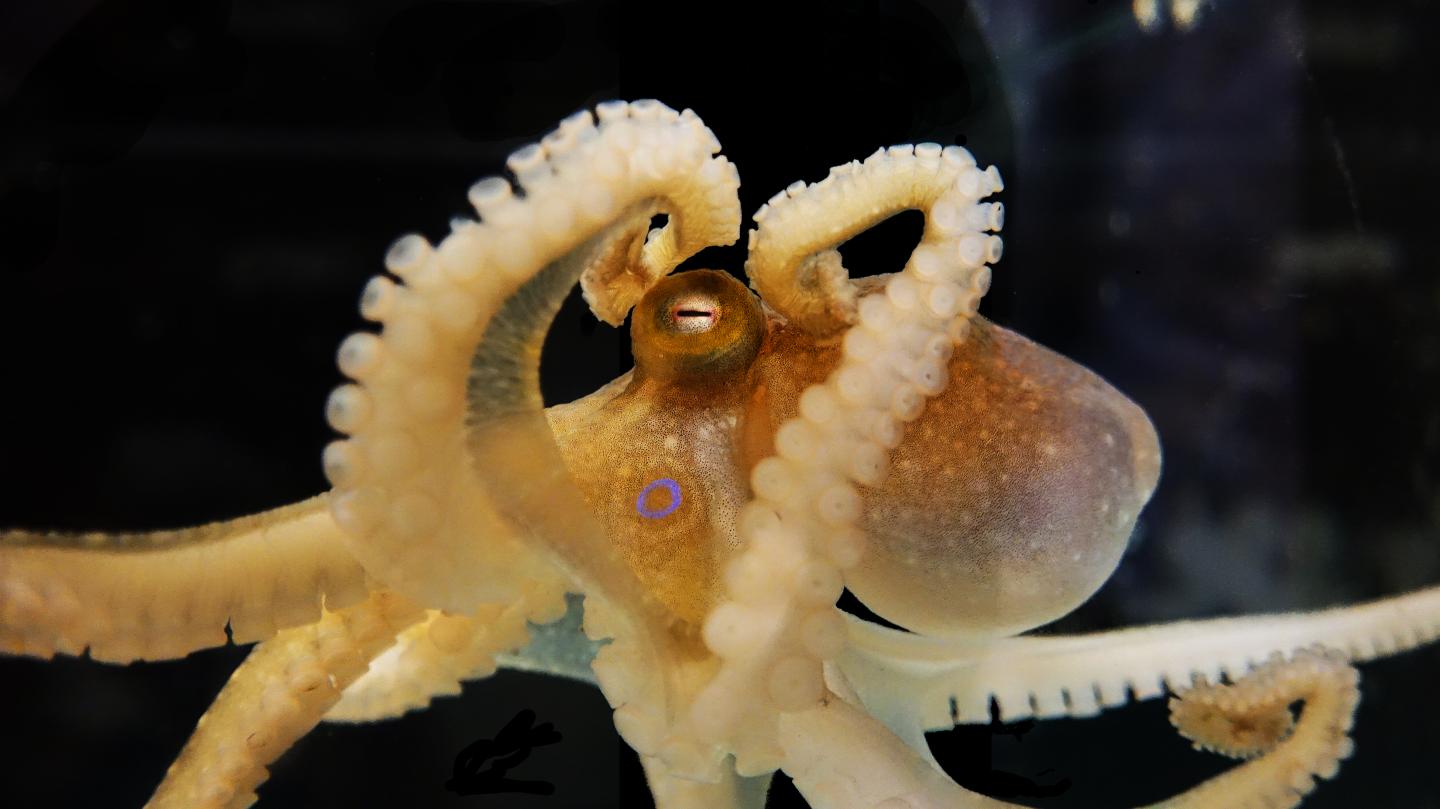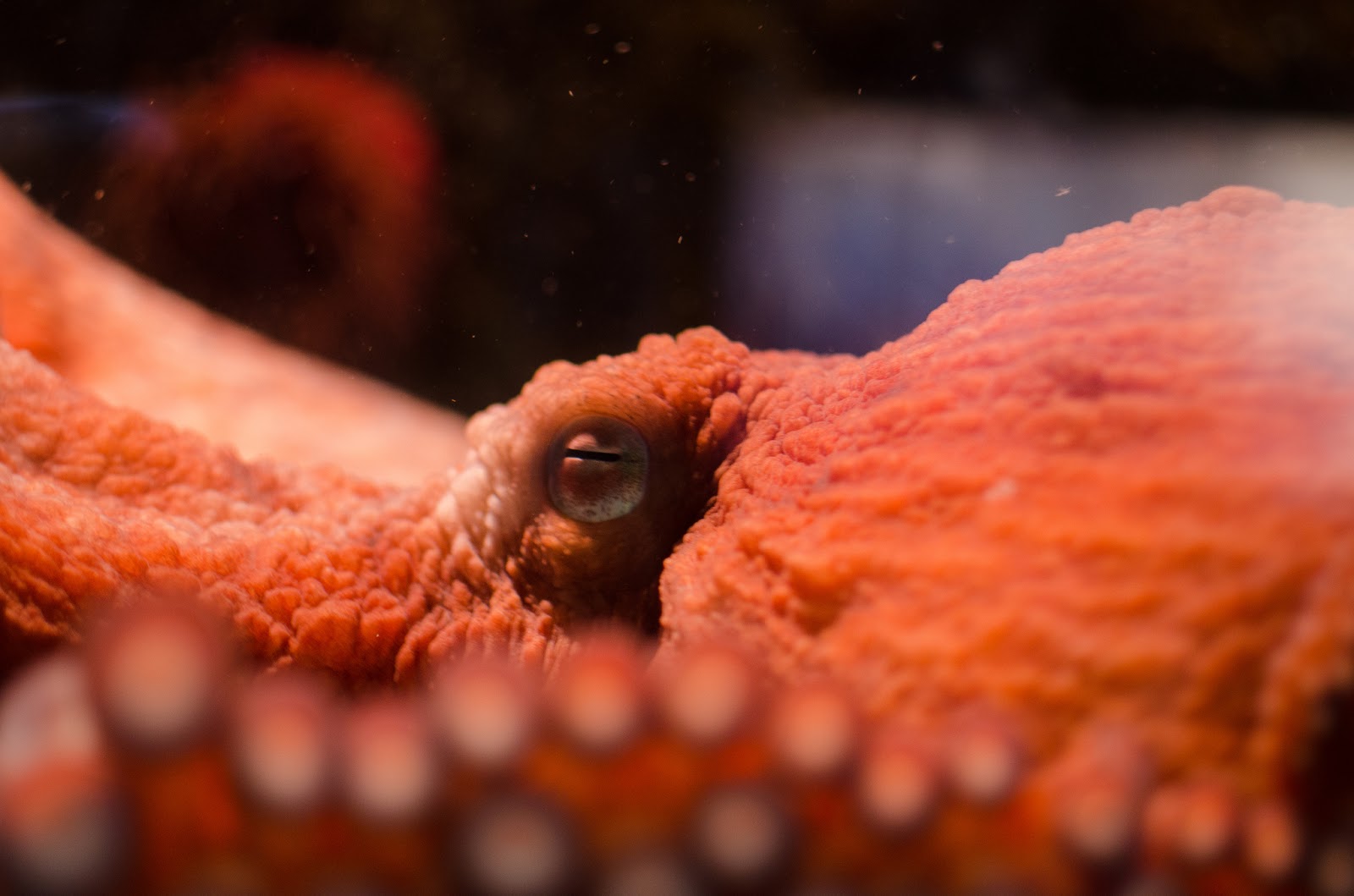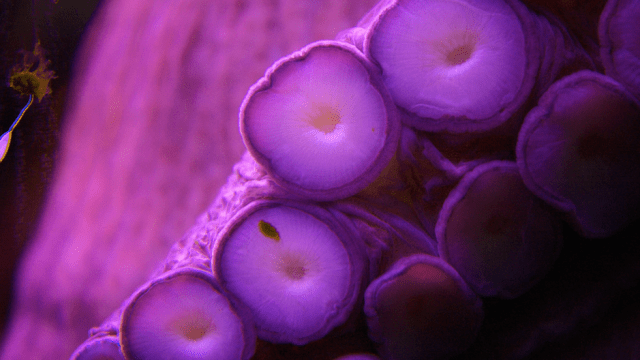Scientists have finished sequencing the first complete octopus genome, and it’s a big step toward unravelling many cephalopod mysteries, including the basis of their unusual intelligence and unmatched camouflage abilities.
The genome of the California two spot octopus (Octopus bimaculoides), published today in Nature, offers a roadmap for scientists interested in all aspects of cephalopod biology, including that of octopuses, squids, cuttlefish, and even the extinct ammonites that ruled the oceans during the Devonian period 400 million years ago. Here’s what the octopus genome has taught us so far and what we hope to learn in the future.
Intelligence
Cephalopods are among the most intelligent creatures on Earth: Their knack for problem solving has been well-documented by neuroscientists and viral YouTube videos alike. But the organisation of their brains is pretty alien.

The California two spot octopus is the first cephalopod to have its entire genome sequenced. Image via Judit Pungor
Unlike humans, cephalopods aren’t about packing all their smarts into one big, squishy container. Rather, they possess a distributed nervous system: A small brain near the esophagus acts as the command and control center, but it’s augmented by large clusters of autonomous neurons in each of the arms. This allows the octopus to control all eight of its limbs almost independently, which is useful when you’re trying to fend off a barracuda and crack open a mollusk at the same time.
For years, scientists have puzzled over how this curious arrangement came to be.
“The sequencing was an opportunity to look at the genome and see what we can learn about the unique brain and morphology of the octopus,” said Daniel Rokhsar, a visiting professor at the Okinawa Institute of Science and Technology, which led the study. “We have already found several gene types that are dramatically expanded in the octopus relative to other vertebrates, and we think they play a critical role allowing a new level of neuronal complexity to be reached in invertebrates.”

Image via Colby Stopa / Flickr
Among the genes that appear to have undergone duplication events in the octopus are those encoding a family of proteins called protocadherins. These proteins are mainly expressed in the developing nervous system and may play a role in short-range signalling between neurons. Another group of molecules called zinc fingers also featured prominently. Zinc fingers are expressed in embryonic and nervous system tissues and are considered important in brain development.
Decoding the genetic basis for the octopus’ strange nervous system helps us appreciate the diversity of ways in which intelligence can be organised. Next up, the researchers hope to sequence the genomes of other cephalopods, including several squid species and the Okinawa octopus. Profiling different species in the cephalopod lineage will help scientists determine which traits have been shared throughout evolutionary history. With that knowledge, we may even be able to piece together what cephalopod intelligence looked like on the ancient Earth, long before the rise of mammals.
Camouflage
Besides being plain clever, cephalopods are masters of disguise. Many species are able to change their colour in a fraction of a second, blending in with their surroundings to avoid predators and sneak up on prey.
For instance, the tiny octopus featured in the video below is able to go from transparent to opaque in a blink. Pigments in the octopus’ skin allow light to pass right by when contracted, rendering the animal transparent. But when the octopus stretches out, those same pigments elongate into light-reflecting shields. This offers the creature a way to constantly lighten or darken itself to match the illumination of its undersea environment.
With the first complete octopus genome, scientists are starting to unravel the basis for these colour changing tricks, as well. Included in the new Nature paper is an analysis of the octopus transcriptome — genes that are being expressed — in a dozen tissues, including the skin.
“We sequenced the genome, our collaborators sequenced the transcriptome, and we combined our analyses,” Rokhsar told Gizmodo. “One thing that stuck out is that we found hundreds of genes found only in cephalopods.”
Some of these genes — particularly those that are “turned on” in the skin — are probably involved in camouflage. For instance, Rokhsar’s team turned up genes encoding reflectins, proteins that can change a tissue’s iridescence. Profiling more cephalopod genomes and doing comparative studies will be the key to figuring out which traits are most important when it comes to biological invisibility cloaks.
“If you compare the genetics of one octopus to another, they’re quite different” Rokhsar said. “They might be as different as a human and an elephant. Something that all octopus have but no squid have, that’s going to be something that emerged after they branched off on the evolutionary tree.”
In a sense, sequencing the first octopus genome is like translating the first book in an unknown language. Now that we’ve done it, we can start to translate more books, and study them together for their hidden meaning.
